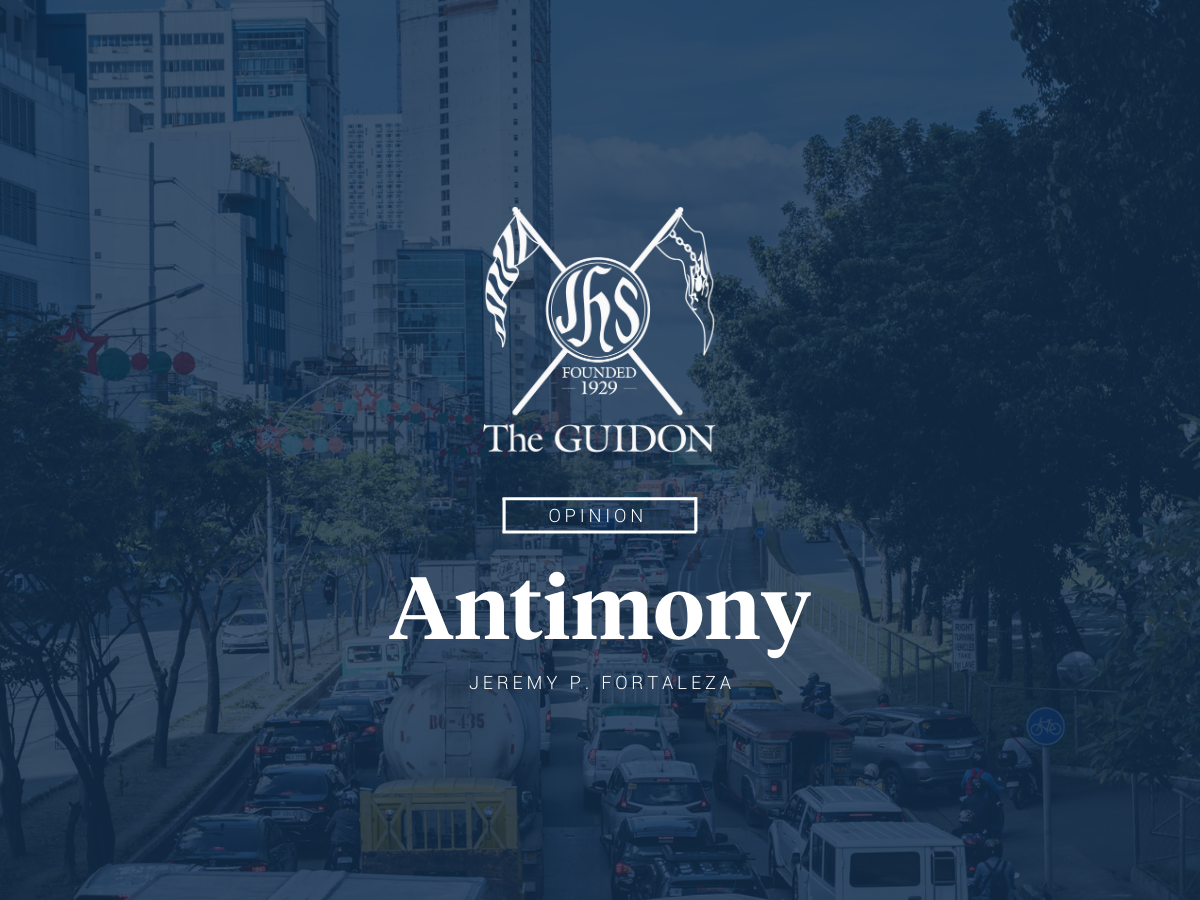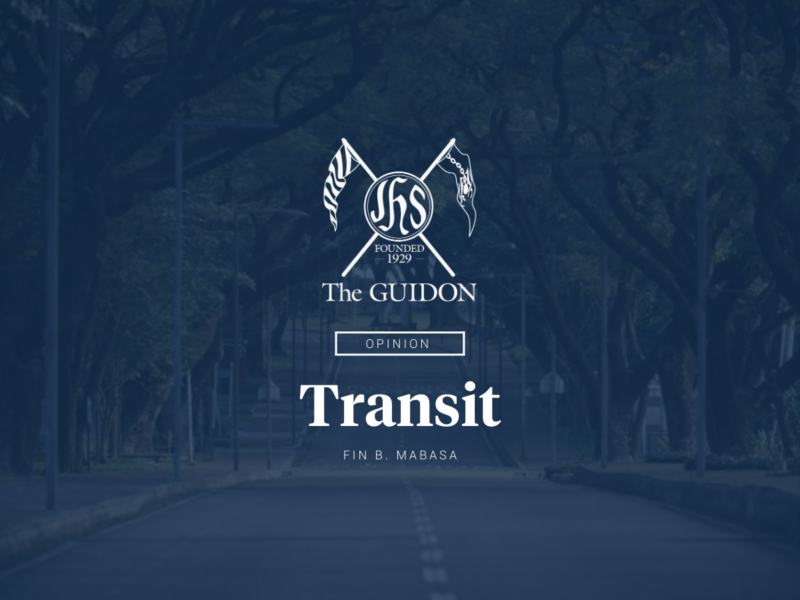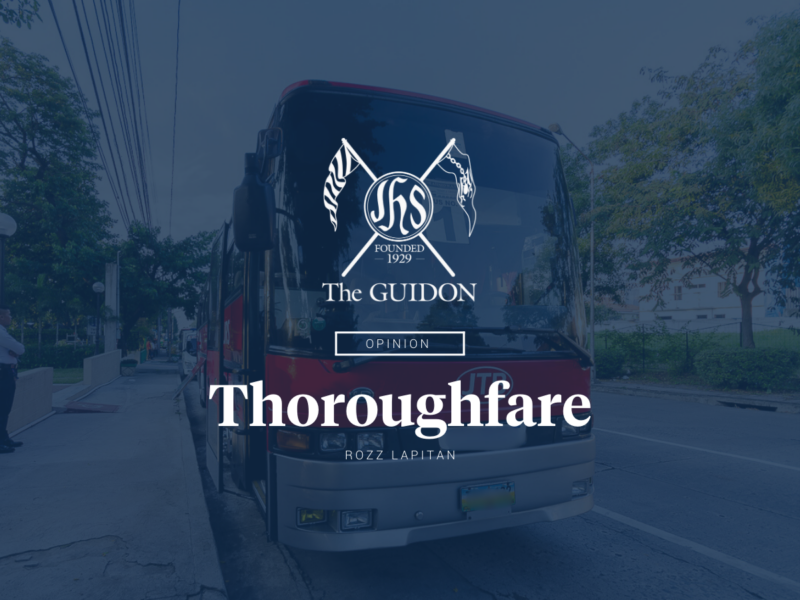Navigating through the bustling Katipunan Avenue is an unending automotive labyrinth. Well-known for its spirited ‘One Big Fight’ chants, Ateneo has now transformed into ‘One Big Parking Lot’—a seemingly endless car show.
To arrive on time for class, students often leave home much earlier than usual, often two hours ahead, for what should be a mere 20-minute commute within a six-mile radius. Be a count behind, and you’ll find yourself stuck in a sea of motionless sedans. Even taxi drivers sometimes refuse to drop off students inside the campus. As people jest, “once you enter Ateneo, you can never leave.”
The nearly identical ingress and egress times of the Higher Education Cluster (HEC) with primary and secondary schools lead to patterns of tangled messes in these peak hours. While this may stem from genuine parental concern for safety, the deeply ingrained “hatid-sundo” culture significantly exacerbates immobilized traffic.
In reality, many members of the Ateneo community deem driving cars to school as the more practical choice. Associated with more affluent backgrounds, this practice saves time and is more convenient. Parking spots on the campus further incentivize car usage among those who can afford it, contributing to more constricted traffic jams. Seeking precious spaces on campus becomes another level of challenge and the Ateneo now appears more like a sprawling parking garage for the privileged.
This isn’t just a tale of a traffic-ridden school; it’s a story highlighting the extent of commitment to the values and ideals promoting sustainable development goals. The Ateneo has made commendable strides in its focus on integral ecology and carbon neutrality by 2030. However, the administration’s decision to add Gate 3.1 and 3.2 roads seems to have intensified the trend toward car-centrism—a stark dissonance with its commitment to becoming one of the Laudato Si universities.
Gradually, the school grounds mirror its outside boundary: the C-5 and Aurora Boulevard. From external three-laned asphalts to extended one-ways, the dominance of private vehicles has repercussions not only for the environment due to increased pollution but also for the overall campus experience.
If only the public transportation system were efficient, comfortable, and reliable, more people would be inclined to commute than ride private vehicles. Car-centrism and inept transit networks affect everyone, irrespective of socioeconomic status. Commuters continue to bear the brunt of such consequences. Thus, integrating transport management, commuter sentiments, and engineering is essential to bridge the gap between private and public transit.
It’s indeed unsettling to think that with each passing day, we’re witnessing changes in the urban landscape within our campus. What was once our ‘home’ with abundant green spaces may gradually transform into a mere utilitarian site solely for transactional education.
Proximity ironically plays with time. You might be so close to Ateneo, but never with four wheels. We are not quite there yet, but once embedded permanently, we could never drive backward an EDSA replicate.
Jeremy is a Chemistry with Materials Science and Engineering student expected to graduate from the Ateneo de Manila University in 2026. With a fervor for climate justice, science education, and journalism, he is committed to driving STEM empowerment through his creative works.
Editor’s Note: The views and opinions expressed by the opinion writer do not necessarily state or reflect those of the publication.







